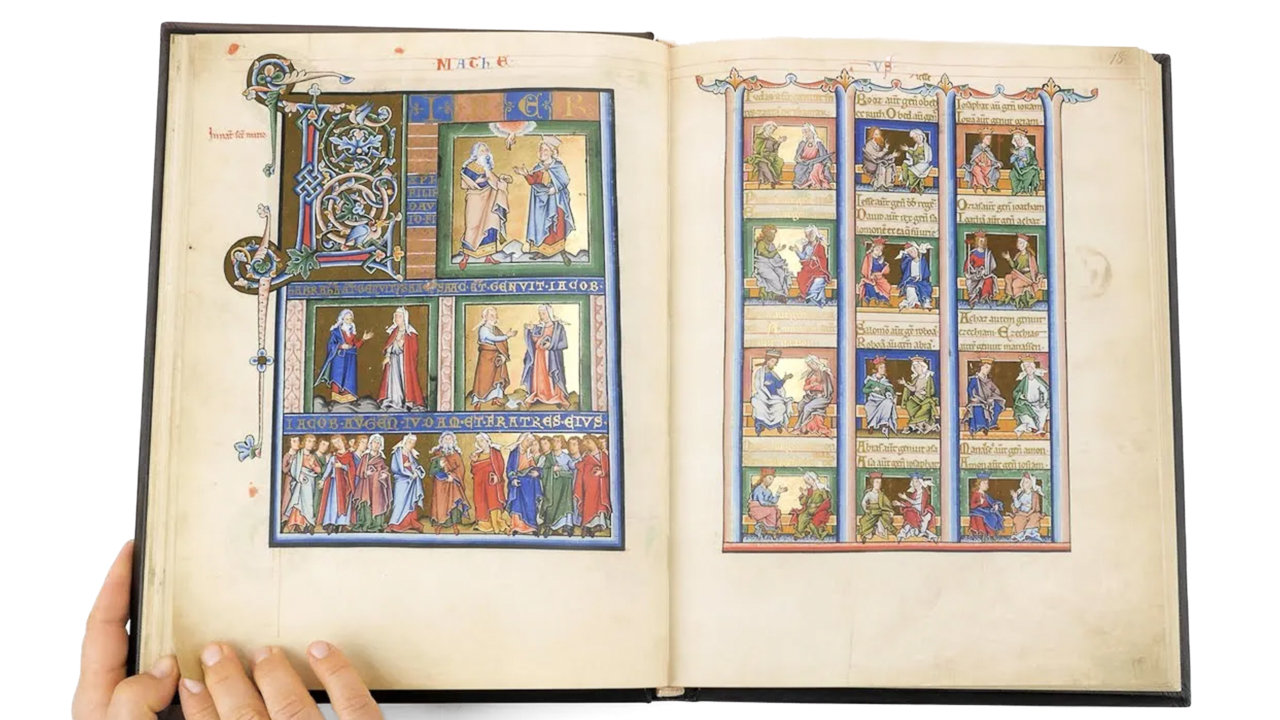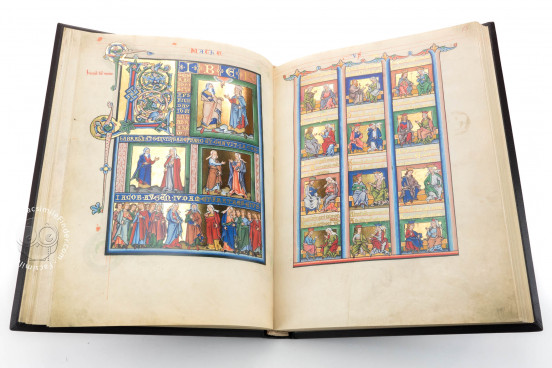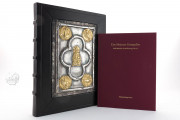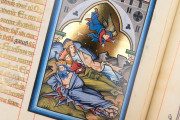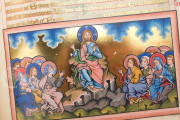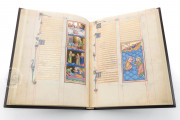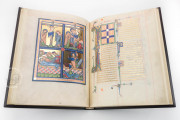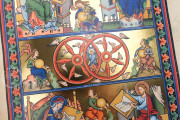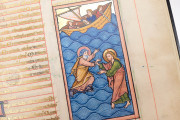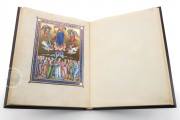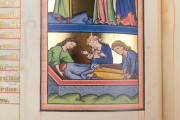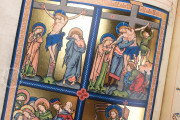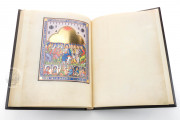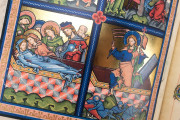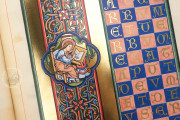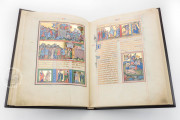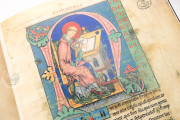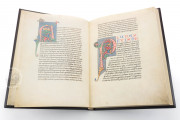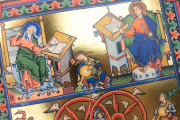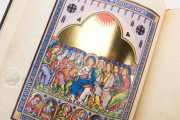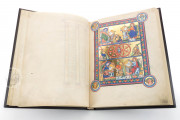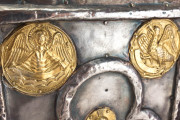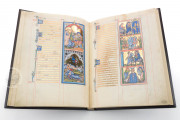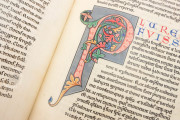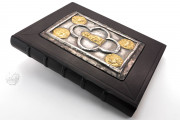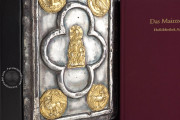The cultural and economic heyday of the Archbishopric in Mainz gave rise to what was perhaps the most significant work of thirteenth-century German painting, the Mainz Gospels, created around 1250. The identity of the patron who ordered this Gospel Book of unparalleled luxury is today unknown. Its outstandingly precious decoration, however, suggests that the unique manuscript was either created on commission by or destined for the powerful Archbishop of the cathedral town on the Rhine. Over the centuries, as part of the Mainz cathedral treasure, the Mainz Gospels has been preserved in the Hofbibliothek Aschaffenburg since 1803.
Codex Aureus: A Golden Book
The Mainz Gospels comprises the four Gospels of the New Testament according to Matthew, Mark, Luke, and John in one volume. The entire Gospel text was copied in pure gold ink as a sign of the highest regard.
Only those entries that were not deemed to be saintly writings, such as the Canon Tables and the Gospel Prologues, are written in black ink. A codex aureus (Latin: golden book), this valuable manuscript follows the imperial tradition of the golden Gospels from the Carolingian and Ottonian periods and occupies a special position among eleventh- to thirteenth-century manuscripts.
The so-called textura script, in which the Mainz Gospels is written, is today considered to be the most sophisticated calligraphic script of the Gothic period. Its equal spacing between the words and careful duct provide for both good readability and an attractive overall appearance. Textura was also the model for Gutenberg's movable type.
71 Individual Images and 300 Decorative Initials
In a virtuoso picture cycle, the anonymous master created 71 individual images and sometimes full-page miniatures to illustrate the New Testament.
A unique feature of thirteenth-century art is the wealth of images illustrating the Life of Christ: the Infancy, Miracle-Working, Passion, Dying on the Cross, Lamentation, and Resurrection are largely depicted on impressive golden grounds and in vibrantly glowing colors.
The influence of Christological picture cycles seen in the tenth and eleventh-century manuscripts from Reichenau and Trier-Echternach is still strongly felt in these pictures.
The large ornamental initials of the Canon Tables extend over several lines as well as 300 multi-colored small decorative initials adorn the 100 manuscript leaves in the representative format of 35.3 x 27 cm.
A Particular Testimony of the Early Gothic Jagged Style
Influenced by the arrival of Gothic architecture in France, the Zackenstil, a distinctive variety of the Gothic figure style–so called because of the jagged, angular broken drapery–conquered German book illumination during the thirteenth century.
The growing competition between sculpture and painting in medieval cathedral architecture may have decisively contributed to the formation of this new style.
Whereas in Romanesque art the horizontal line was the distinctive spatial dimension, the Gothic style is dominated by the vertical line. Forms now tend to reach toward the sky and, unlike in previous styles, appear clear, transparent, and dynamic.
The Gothic formal vocabulary is based on the conviction that spiritual truth is made visible by beauty. The sometimes overly sharp contours of the Zackenstil result from the wish to confront religious sculptural art with an equally expressive and vivacious art form.
Byzantian influences in the figural design fuse with new impulses from France to create a moving expressiveness and a three-dimensionality of almost relievo quality.
A Feast of Color and Light
Rivaling with the evenly golden texture of the script, the charming miniatures glow in brilliant colors that are easily comparable with colorful church frescoes or the luminosity of glass painting.
Like a church window flooded with light, the strong colors of the pictorial and decorative elements glow intensely on the sheer eye-dazzling golden grounds.
Deep red, green, and blue pigments in addition to pastel-like shades in light blue, pink, purple, and violet lend both images and initials a precious and well-balanced appearance.
We have 1 facsimile edition of the manuscript "Mainz Gospels": Mainzer Evangeliar facsimile edition, published by Faksimile Verlag, 2007
Request Info / Price
